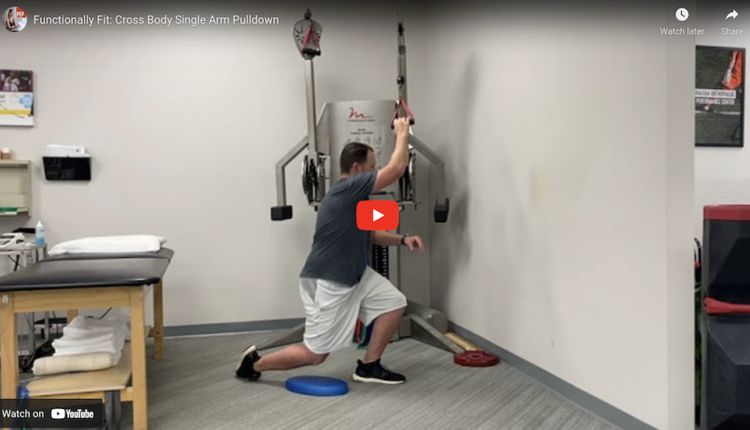Traditional lunges or split squats can cause anterior knee pain for some people. Limited ankle dorsiflexion and/or anterior tibial translation coupled with deeper knee flexion may contribute to compressive forces in the patellofemoral joint that may negatively impact clients with chondromalacia patella or arthritis.
This exercise utilizes a wedge and front foot (heel) elevated position to introduce some artificial dorsiflexion and allow the tibia to remain more vertical with the split squat.


Execution:
Begin in a split stance position with the left foot forward on a wedge (or 45-pound weight plate) and the right foot behind. Slowly descend into a split squat through a full pain-free range of motion. Pause at the bottom and return to the start position. Perform 8-12 reps and switch sides. Repeat 2-3 sets on each side. Alternatively, perform the exercise for time.
Alternative versions:
1. Pulsing split squats
2. Isometric holds
Progressions:
1. Increase external load with a weight vest, dumbbells or holding a kettlebell in the goblet position
2. Increase time under tension via a slower cadence on descent or by increasing total time for pulsing/isometric split squats
Note: It is important to maintain an upright position with the torso and avoid painful range of motion.
Application:
This exercise variation is often effective in helping clients with anterior knee pain perform an effective split squat with much less to no discomfort while traveling into more knee flexion. The wedge allows the trunk to remain more upright shifting more force contribution to the quadriceps, and this coupled with deeper flexion angles translates to a more effective quadriceps strengthening exercise. It can be challenging to program squat patterns for those with anterior knee pain, and this exercise whether isometric or concentric/eccentric, may prove very useful for clients struggling with traditional squat or lunge exercises.



















